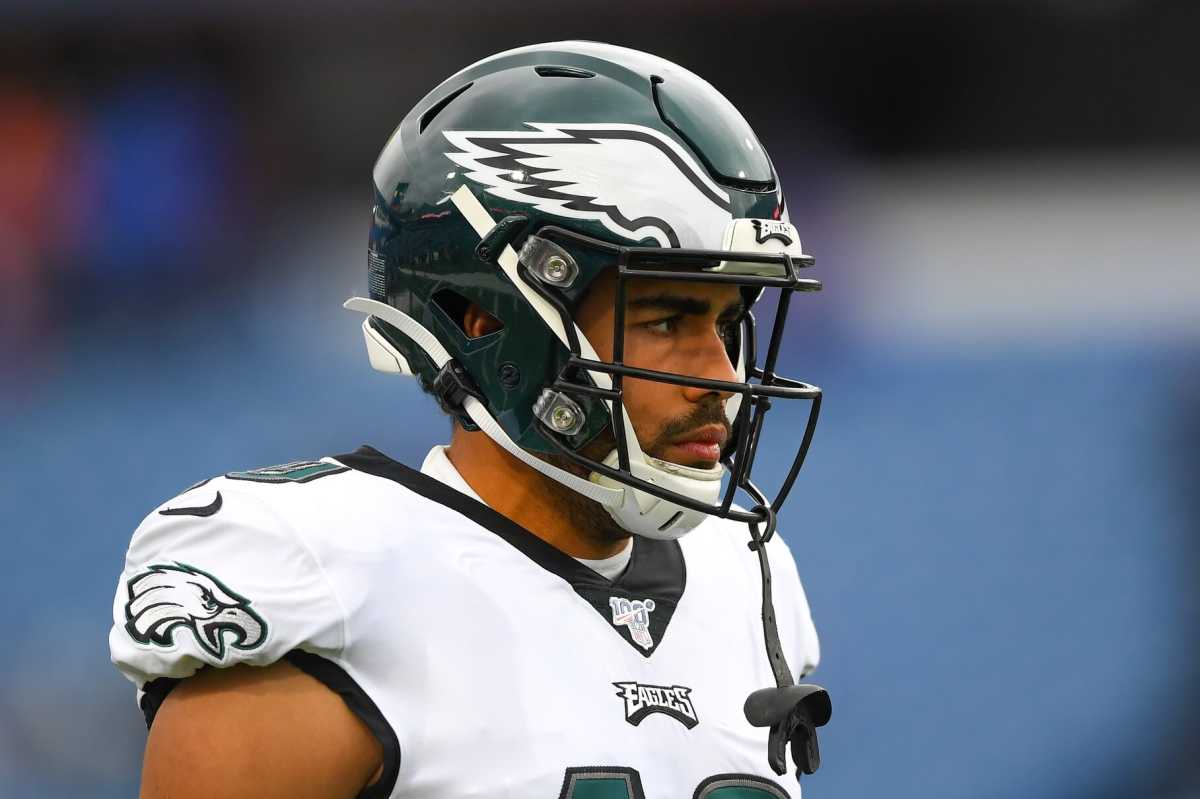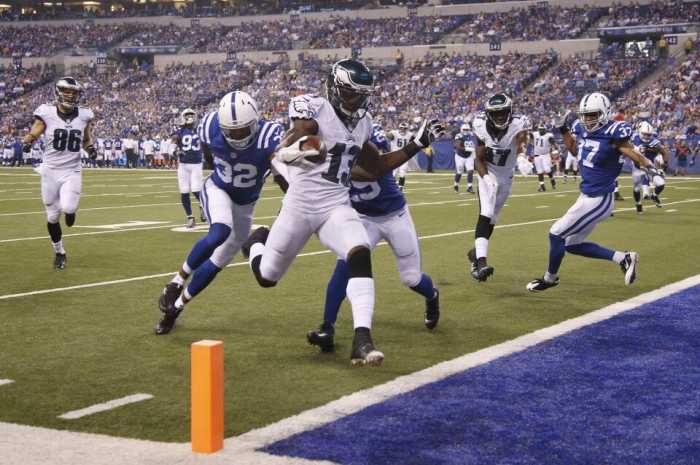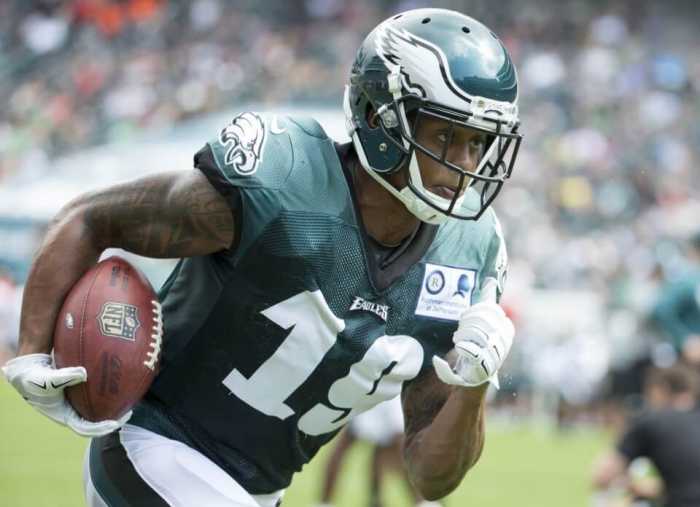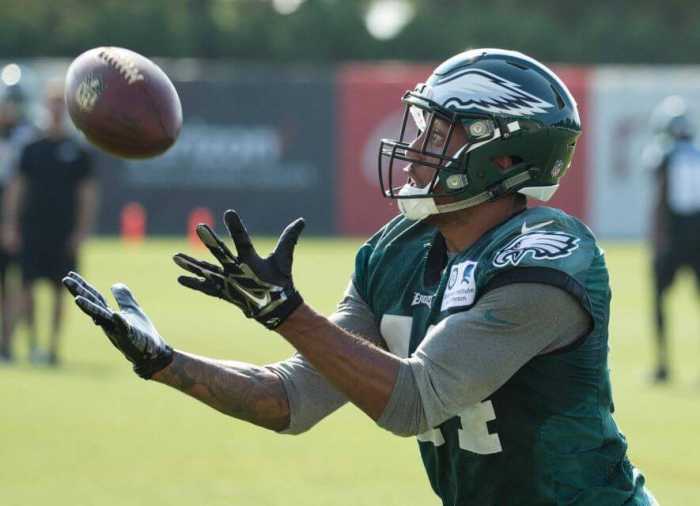The Film
With damning numbers, it will be tough to call JJAW’s rookie season anything but a disappointment. With the chance to start games both early in the season and as the year comes to a close, he really hasn’t been able to translate opportunity to success. However, his numbers perhaps unfairly portray his potential moving forward. All that preseason hype shouldn’t be forgotten. Despite having lackluster on-field production, there are some redeeming sentiments regarding Arcega-Whiteside’s rookie season.
First, it’s important to understand the unique circumstances surrounding the young man’s first year in the league. Earlier in the season, our very own Thomas Ringgaard Petersen dissected the tricky position JJAW into which was placed. A lot of the points made continue to ring true. While it doesn’t account for every knock against Arcega-Whiteside, lack of sustained opportunity has certainly hampered the young receiver’s ability to showcase his talent. It also has been an incredibly tumultuous road from draft pick to starting receiver for the Stanford alum.
Before we go any further, I implore you to check out Thomas’ article. I’ll also be using a metric tonne of film analysis swiped from his Twitter. I highly recommend a follow, he’s one of the best in the business for Eagles film.
As we saw above, J.J.’s year started off with a bang. He was electric in the preseason, looking like a man among boys, even when forced to face the opponent’s starting corners — such as Titans’ Malcolm Butler. Riding a high into the regular season, Arcega-Whiteside was handed the difficult task of filling Alshon Jeffery’s shoes while he worked his way back from injury. Being a veteran, Jeffery is asked to run a myriad of routes in the Eagles offense despite his limitations as a route runner.
In his first big week back from injury — against the Minnesota Vikings in Week 6 — this is what his route chart looked like.
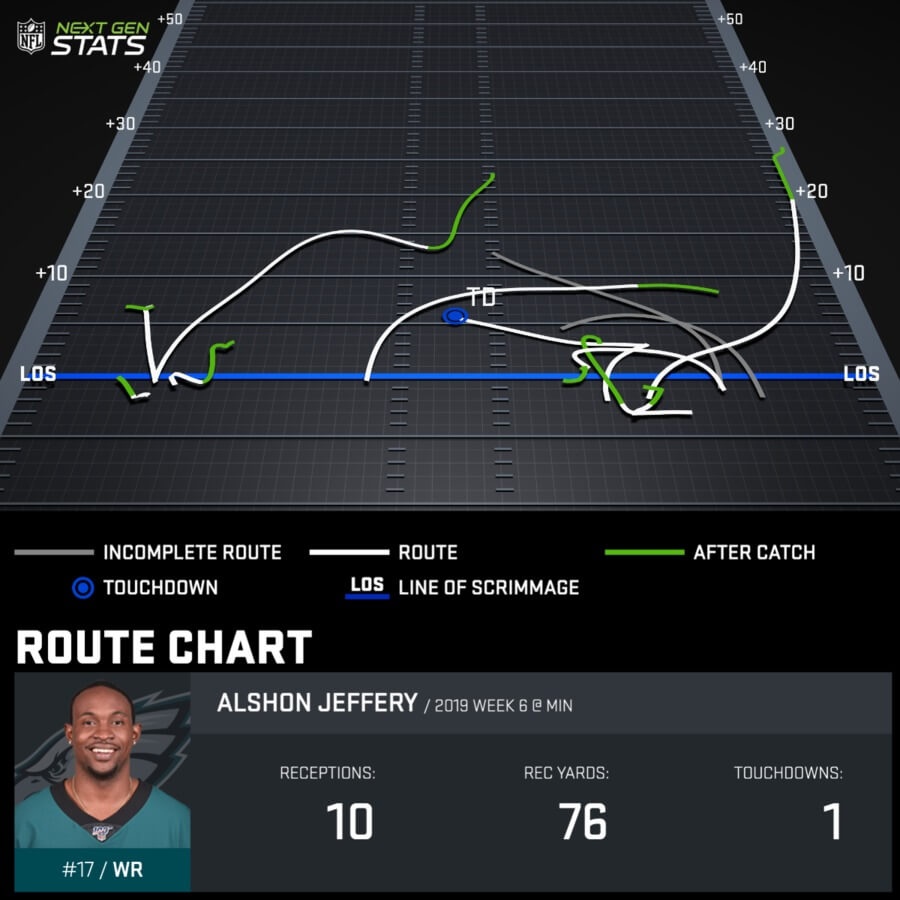
While the offense was certainly simplified for Arcega-Whiteside, he was still asked to do much of the same to open up the field for the star of the offense — Zach Ertz. While any respectable NFL receiver will be asked to run a wide range of route over the span of their career, a route tree like the one above is a lot to ask of a rookie in his first few regular-season games. It’s no wonder videos surfaced of on-field confusion between the receivers.
At Stanford, Arcega-Whiteside was rarely asked to cross the field or run any intricate routes.
This has also given some credibility to the criticism that JJAW’s route running may need some work at the professional level. He averages less than one yard of separation on his targets per PlayerProfiler.
And yet, against the Falcons, J.J. was still able to find open field. As we continue to look at the game film, it doesn’t seem that Arcega-Whiteside is hampered by his route running ability.
To quote JJAW himself, what he does well is beat corners downfield. Both of those plays are likely 50+ yard touchdowns if Wentz is able to get the ball to the young receiver. In just two plays, his numbers would look immediately better.
Then came Alshon Jeffery’s return to the lineup, which saw Arcega-Whiteside relegated to the 2nd team. He lost practice reps and crucial reps with Carson in at QB. He also cross trained at other positions for some reason I have yet to understand. Yes, versatility is a very valuable asset for any young player, but, let’s be frank, JJAW was drafted to eventually supplant Jeffery, not to play slot receiver or to be a gadget/move player.
The next time he would see any extended action was against the Patriots in Week 11. This one was in a streak of some of Wentz’ worst games of his career, let alone this season. Again, J.J. is able to get open against a very good Patriots secondary. On plays were he doesn’t get the ball, he shows off his blocking ability. Without the ball in his hands, he is still finding ways to positively impact the team.
In this clip we again see questionable route choices from the coaching staff for JJAW. Sure, the young man is a big-bodied receiver with the ability to make contested catches. When you need a first down, a hook or an in makes sense. However, the one instance he is allowed to release downfield is on a designed screen. He easily finds space behind the defense, which we’ve seen over and over again.
In an offense that struggles to find plays of 20 yards or more in the passing game, the reluctance to take a downfield shot to a player that has made his entire career of said plays is dumbfounding. He’s had only 9 deep balls thrown his way all season — averaging one a game.
Then came what is likely the catch of the year for the Eagles.
Continued on the page below.

